#Autocad Operator
Explore tagged Tumblr posts
Text
Understanding CAD Computer Requirements: Essential Guide for Optimal Performance
If you’re diving into the world of Computer-Aided Design (CAD), ensuring that your system is properly equipped to handle the demands of software like AutoCAD is crucial. Whether you are an architect, engineer, or designer, having the right hardware and software configuration will not only improve your workflow but also guarantee smoother performance and better results. In this blog, we’ll walk through the key computer requirements for running AutoCAD and other CAD software smoothly.
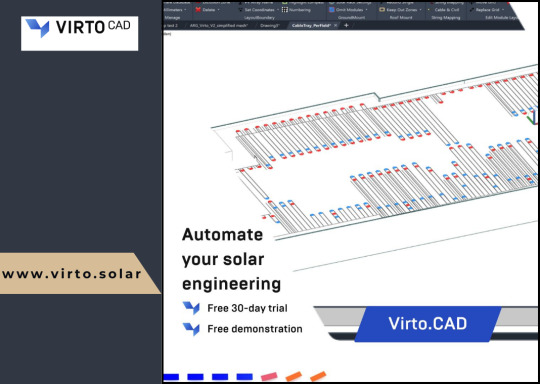
Why Understanding CAD Computer Requirements Matters
Running CAD software efficiently requires more than just having a standard computer. CAD applications, especially AutoCAD, are resource-intensive and demand high computing power. Without a suitable setup, you might experience lagging, crashes, or long rendering times that could affect productivity. Understanding these requirements ensures that your system is up to the task and can handle the software’s robust functionalities without compromising performance.
Key CAD Computer Requirements for Optimal Performance
1. Processor (CPU): The Brain of Your CAD System
The processor is the heart of your CAD system. CAD software requires a multi-core processor to handle complex calculations and data. AutoCAD, for example, performs better on processors that can handle multiple tasks at once.
Recommended: A multi-core processor, ideally with 4 or more cores, such as Intel i7/i9 or AMD Ryzen 7/9.
Minimum: Intel Core i5 or AMD Ryzen 5 (6th generation or newer).
Choosing a higher-end processor will significantly enhance your CAD experience, especially when working with complex designs or large files.
2. Graphics Card (GPU): Visuals and Rendering Performance
The graphics card is crucial for rendering 3D models and visualizing designs in AutoCAD. A powerful GPU will ensure smooth navigation, rendering, and model manipulation in both 2D and 3D spaces.
Recommended: NVIDIA GeForce RTX Quadro series or AMD Radeon Pro series.
Minimum: NVIDIA GeForce GTX or AMD Radeon RX series.
For demanding 3D modeling tasks, consider upgrading to a workstation-grade GPU like the NVIDIA Quadro series, which is optimized for professional CAD workflows.
3. Memory (RAM): Smooth Multitasking
When working with large files or running multiple applications, ample RAM is necessary to avoid system slowdowns or crashes. CAD software requires significant memory to store large drawings, 3D models, and complex calculations.
Recommended: 16GB or more of RAM.
Minimum: 8GB of RAM.
For more intensive CAD tasks or multitasking (like running AutoCAD with other software), investing in 32GB or more of RAM is ideal.
4. Storage: Quick Access to Large Files
CAD designs often involve large files that need fast access and ample storage space. A slow hard drive can create bottlenecks when loading files or saving work, hindering your productivity. Opting for an SSD (Solid-State Drive) will significantly improve file loading times and overall system responsiveness.
Recommended: 512GB or higher SSD for storage.
Minimum: 256GB SSD or a 1TB HDD (though SSD is always recommended).
For the best performance, SSDs should be used for the operating system and primary software installation, while larger HDDs can be used for archival purposes.
5. Display: Crisp and Accurate Visualization
A high-resolution display is essential for accurately visualizing detailed designs and models. AutoCAD users often work with intricate 2D and 3D elements, making a large, high-resolution monitor an essential component of the setup.
Recommended: A 24” or larger screen with 1920x1080 resolution (Full HD) or higher, ideally with IPS technology for better color accuracy.
Minimum: 21” screen with 1920x1080 resolution.
For better productivity, you may even consider a dual monitor setup to increase workspace and improve multitasking efficiency.
6. Operating System: AutoCAD Compatibility
The operating system you use can impact the compatibility and performance of your CAD software. AutoCAD supports both Windows and macOS, but Windows remains the dominant platform for CAD applications due to better driver support and compatibility.
Recommended: Windows 10 64-bit (or newer), or macOS Mojave 10.14 or later.
Minimum: Windows 8.1 (64-bit) or macOS High Sierra 10.13 or later.
For those using Windows, make sure to keep your OS updated to take advantage of the latest performance and security enhancements.
7. Internet Connection: Cloud Integration and Updates
While not a direct hardware requirement, a reliable internet connection is important for downloading software updates, using cloud-based storage, and collaborating on projects. AutoCAD’s cloud integration features, such as AutoCAD Web and AutoCAD Mobile, rely on internet connectivity for seamless operation.
Recommended: Stable broadband connection with speeds of at least 10 Mbps.
Minimum: Basic internet connection for updates and cloud features.
Additional Tips for Optimizing Your CAD System
Ensure Regular Software Updates: Keeping your AutoCAD software and drivers up to date ensures compatibility and optimizes performance.
Consider External Storage for Backup: Large CAD files can quickly fill up your system’s storage, so having an external drive or cloud storage option for backup and archiving is a good idea.
Use CAD-Specific Peripherals: A high-quality mouse and keyboard designed for CAD work can enhance precision and reduce strain during long working hours.
Conclusion
Setting up a system to run AutoCAD and other CAD software efficiently isn’t just about meeting the bare minimum requirements — it’s about ensuring that your system can handle complex design tasks without compromising on speed or performance. By investing in a high-performance processor, powerful graphics card, sufficient RAM, and an SSD for fast storage, you’ll experience smoother, more efficient CAD workflows.
To learn more about AutoCAD system requirements, be sure to check out Virto Solar’s AutoCAD System Requirements page. This guide will help you make the right decisions for your setup, ensuring that your CAD design work is always at its best.
Are you ready to upgrade your system for seamless CAD experiences? Make sure your system is optimized for success with the right components, and get started on your next project with confidence!
#AutoCAD System Requirements#Best Computer for AutoCAD#AutoCAD Hardware Requirements#Computer Requirements for CAD Software#Optimal PC for AutoCAD#CAD System Configuration#CAD Design Computer Specifications#Best Graphics Card for AutoCAD#Recommended Processor for AutoCAD#AutoCAD RAM Requirements#Storage Requirements for AutoCAD#AutoCAD Performance Optimization#How to Choose a Computer for AutoCAD#AutoCAD PC Setup Guide#Best Workstation for AutoCAD#AutoCAD Compatible Hardware#Laptop for AutoCAD#Solid-State Drive for AutoCAD#AutoCAD 3D Modeling Requirements#AutoCAD 2025 System Requirements#How Much RAM for AutoCAD#Best Monitor for CAD Design#AutoCAD Operating System Requirements#AutoCAD Graphic Cards Comparison
0 notes
Text
#solidcam#autocad#cnc machine programming#cnc machine operation#engineering student#engineering#iti#btech
0 notes
Text
CAMPAIGN UPDATE! Please Read.
Hello everyone! I’m here with an update on Maha’s current situation, and how the campaign is doing. I'm very sorry that it was down and people couldn't donate! That has been fixed.
After much thoughtful consideration, she has decided that she’s not leaving Iraq asap since she only has a year left of college, this might provide a more stable future for her. She will try her best to bite the bullet a bit longer.
Even if she wanted to leave for Canada asap, she was told by a friend that her brother said, if she’s leaving the country he will kill her. Because killing her will be better than having the family and his personal life be filled with shame…….. An extremely suffocating and horrific situation. This all makes everything even more dangerous, difficult, and makes it so much more planning has to be involved for this to work out. We sincerely appreciate all of your support.
So, we have decided to wire all of the funds raised to her (~$2640 that has deposited into the bank as if 3/26/2025) so Maha can survive off of one job while she is finishing college. She is at a high risk for— everything, right now she’s working three jobs, in college full time and can only get 3-4 hours of sleep per night. Not to mention she’s still recovering from cancer, having multiple chronic conditions, and disability. She’s running on fumes, and this fund will make sure she can afford to sleep at night and continue to stay alive!
As if 4/18/2025 we are still figuring out ways to get the money to her as Moneygram isn't operational, Western Union isn't working and bank wiring takes months if it works.
Maha requests to please make the donation number end in 5 or 0, haha, it is easier to calculate things this way, she’s very mentally ill and can’t comprehend numbers otherwise. (She requested me to say this)
If you cannot afford to send any financial support but are able to help in other ways, please reach out to me via signal, @SillyGoose.32
Maha needs more than just funds and any amount of support is appreciated!
Please. If you are able to help Maha secure a work visa in Canada so that she may be able to leave Iraq without finishing college first, reach out! If we can help her secure a job, that would be of great support to my friend’s survival and future, with that sort of help she can theoretically get to Canada in a month.
She can work any white collar jobs, carpentry work, and anything that won’t be in a hot environment or asks her to do heavy lifting. She is an interior designer and proficient in Autocad, and is skilled in leadership, coordination, and problem solving. Over the years she has been teaching classmates and friends classroom concepts, making her a skilled educator. She’s fluent in Arabic and English, and can teach Arabic.
Last, love you all, stay safe 🫶 please, contribute however you can.
47 notes
·
View notes
Text


100 Days of Productivity [8/100]
🌿04/09/23🌿
Decided to work on some drafting on AutoCAD today, as well as catching up with some note taking for one of my courses.
🎧 song of the day: Smooth Operator - Sade
#studyblr#studygram#studying#studyspo#study#mine#studymotivation#student#studyday#university#100daysofproductivitychallenge#100 days of productivity#100dop#100daysofproductivity#student life#study blog#study motivation#universitylife#study aesthetic#dop23
275 notes
·
View notes
Text
From Design to Deployment: How Switchgear Systems Are Built

In the modern world of electrical engineering, switchgear systems play a critical role in ensuring the safe distribution and control of electrical power. From substations and factories to commercial buildings and critical infrastructure, switchgear is the silent guardian that protects equipment, ensures safety, and minimizes power failures.
But have you ever wondered what goes on behind the scenes, from the idea to the actual installation? Let’s dive into the full journey — from design to deployment — of how a switchgear system is built.
Step 1: Requirement Analysis and Load Study
Every switchgear project begins with requirement analysis. This includes:
Understanding the electrical load requirements
Calculating voltage levels, short-circuit ratings, and operating current
Identifying environmental conditions: indoor, outdoor, temperature, humidity
Reviewing applicable industry standards like IEC, ANSI, or DEWA regulations (especially in UAE)
This stage helps engineers determine whether the project needs low voltage (LV), medium voltage (MV), or high voltage (HV) switchgear.
Step 2: Conceptual Design & Engineering
Once the requirements are clear, the conceptual design begins.
Selection of switchgear type (air insulated, gas insulated, metal-enclosed, metal-clad, etc.)
Deciding on protection devices: MCCBs, ACBs, relays, CTs, VTs, and fuses
Creating single-line diagrams (SLDs) and layout drawings
Choosing the busbar material (copper or aluminum), insulation type, and earthing arrangements
Software like AutoCAD, EPLAN, and ETAP are commonly used for precise engineering drawings and simulations.
Step 3: Manufacturing & Fabrication
This is where the physical structure comes to life.
Sheet metal is cut, punched, and bent to form the panel enclosures
Powder coating or galvanizing is done for corrosion protection
Assembly of circuit breakers, contactors, protection relays, meters, etc.
Internal wiring is installed according to the schematic
Every switchgear panel is built with precision and must undergo quality control checks at each stage.
Step 4: Factory Testing (FAT)
Before deployment, every switchgear unit undergoes Factory Acceptance Testing (FAT) to ensure it meets technical and safety standards.
Typical FAT includes:
High-voltage insulation testing
Continuity and phase sequence testing
Functionality check of all protection relays and interlocks
Mechanical operations of breakers and switches
Thermal imaging to detect hotspots
Only after passing FAT, the switchgear is cleared for shipping.
Step 5: Transportation & Site Installation
Transportation must be handled with care to avoid damage to components. At the site:
Panels are unloaded and moved to their final location
Cabling and bus duct connections are established
Earthing systems are connected
Environmental sealing is done if installed outdoors or in dusty environments
Step 6: Commissioning & Site Acceptance Testing (SAT)
This final stage ensures the switchgear is ready for live operation.
Final checks and Site Acceptance Tests (SAT) are performed
System integration is tested with other components like transformers, UPS, and generators
Load tests and trial runs are conducted
Commissioning report is generated, and documentation is handed over to the client
Conclusion
From idea to execution, the journey of building a switchgear system is highly technical, safety-driven, and precision-based. Whether you’re in power generation, industrial automation, or commercial construction, understanding this process ensures you choose the right system for your needs.
7 notes
·
View notes
Text
Difference Between Architecture and Architectural Engineering

In the construction and design industry architecture maintains distinct boundaries from architectural engineering despite their overlapping domain. These professions emphasize structure functionality along with artful presentations yet they conduct their work differently throughout all levels of expertise. We will discuss the essential distinctions between architecture and architectural engineering through this examination of their function in creating built environments.
What Is Architecture?
Architecture studies the design process for creating both buildings and defined physical environments. Architects develop ideas and execute designs for structural places through planning and visual form creation to accomplish operational functionality alongside visual appearance excellence. Architects work based on their creative skills that link with design principles and cultural representation.

Core Responsibilities of Architects:
Design and Planning: Architects define all stages of building construction beginning with the positioning of spaces alongside their artistic design features.
Functionality and Aesthetics: Architects achieve aesthetic excellence by tackling both efficiency and facade elegance alongside client-directed design objectives.
Project Management: The responsibilities of an architect span across the entire project lifecycle beginning with design review then proceeding through construction activities with engineers and contractors and multiple stakeholders.
Regulatory Compliance: During design construction and building evaluation stage architects confirm their work meets all required building codes together with zoning regulations along with safety requirements.
Skills and Education:
A complete architecture program takes five years to complete and places equal importance on design development and architectural history study and design theory exploration.
Proficiency in design tools such as AutoCAD, SketchUp, and Revit.
Creative problem-solving and an eye for detail
Read More ...
6 notes
·
View notes
Text
Custom Prints: How to Choose Printers That Align with Your Architectural Needs
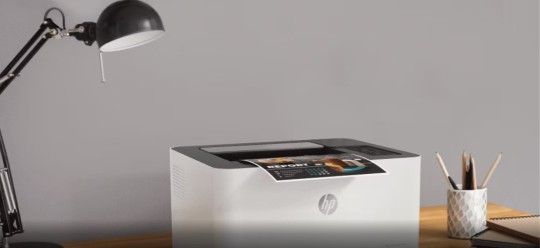
In the architecture industry, the quality of printed materials significantly impacts the presentation and execution of projects. Various printing technologies are available to meet these needs. How can architects ensure they choose the right printer that aligns perfectly with their requirements? This challenge is crucial for maintaining high standards in architectural work.
This guide will help you steer the options available, highlighting the critical factors to consider. Selecting the ideal printer for architectural uses involves understanding the different types of plotters and their capabilities. Each type offers distinctive benefits depending on the specific needs of your projects.
Understanding Plotter Printers
They are indispensable in architecture because they can handle large-format prints essential for detailed architectural drawings and blueprints. These produce crisp, high-resolution images on large paper sizes, crucial for detailed work. When choosing a plotter, it’s essential to consider the types available:
Pen plotters use pens to draw on paper. They are great for high precision but generally slower than their modern counterparts.
The Inkjet plotter’s spray ink allows for a broader range of colours and faster output. They are suited for both high-quality presentations and standard drafts.
Laser Printers for Fast Outputs
Laser printers might be the way to go for architects needing quicker print jobs for client meetings or internal reviews. These are not typically used for large format prints but are excellent for smaller, high-volume tasks where speed is critical. They deliver fast and reliable outputs, although with a slight compromise on the fine detail that plotters can achieve.
Key Features to Consider
Resolution and Quality
The resolution of a printer dictates the clarity and detail of the printed document. High-resolution printers are essential in architecture because they ensure that every line and detail of the sketches and plans is visible and clear. Generally, a higher DPI (dots per inch) rating indicates better resolution.
Speed and Efficiency
Time is often a constraint in project deliveries, making a printer’s speed another vital consideration. However, the choice should carefully balance speed and quality, as some fast printers may sacrifice detail for quicker output. Evaluate its speed in the context of typical project sizes and deadlines.
Media Handling
Architectural printing often requires different media types, ranging from thick card stocks to glossy-finish papers for high-quality presentations. Ensure the printer can handle the diversity of media you use in your practice. Check for the maximum and minimum paper sizes and whether the printer supports roll-fed or sheet-fed options.
Cost Considerations
Initial Investment vs. Long-Term Costs
Printers come with varying price tags; often, higher-priced models offer greater versatility and quality. However, the ongoing operating costs, such as ink or toner, maintenance, and paper, must be considered. A cheaper one can lead to higher long-term expenses due to inefficient ink usage or frequent maintenance needs.
Ink or Toner Expenses
Depending on the type, the ink or toner cost can significantly affect the overall cost of ownership. Plotters typically use ink, which can be pricey, especially if it is inefficient. On the other hand, toner used in laser printers might be less expensive per page, especially for high-volume printing.
Connectivity and Software Integration
Ease of Use and Compatibility
A printer’s compatibility with existing architectural software is crucial in today’s digital-focused workflow. Seamlessly integrating with software like AutoCAD, Revit, or other design tools can streamline the printing process, reducing errors and saving time.
Network Connectivity
Consider printers with built-in network capabilities that allow multiple users to access it across the office network. Wireless printing and cloud capabilities are additional features that enhance flexibility, enabling you to print from various devices or even remotely.
Environmental Impact
Energy Efficiency and Sustainability
With an improving focus on sustainability in architecture, the environmental impact of your office equipment should be noticed. Look for printers with energy-saving features and those that meet environmental standards like ENERGY STAR. Additionally, consider the ones that offer features like automatic duplex printing to save on paper.
Making the Right Choice
Choosing the right printer involves weighing various factors, from print quality and speed to cost and environmental impact. By understanding the specific demands of your architectural projects and how different printers meet those needs, you can select a printer that fits your budget and enhances your firm’s productivity and output quality. The right one becomes invaluable in bringing architectural visions to life, ensuring every print reflects the precision and detail your projects deserve.
By considering the detailed needs of your practice—including the different types of plotters available—you can choose a printer that not only meets but enhances your professional output. A well-chosen one will serve as a reliable tool that supports your creative process, ensures high standards are maintained, and ultimately contributes to the satisfaction of your clients. Invest wisely, and your chosen printer will prove integral to the precision and efficiency of your architectural endeavours.
10 notes
·
View notes
Text

🔔 Stop Scrolling! 💥 Learn ArtCAM & Rule the CNC World!
🎓 Scope Computers – Where Designers Become CNC Experts 📍 Bhaskar Circle, Ratanada, Jodhpur 🌐 Online + Offline Classes – Learn From Anywhere on Earth!
🎯 Tailored Training For: ✔️ CNC Machine Operators ✔️ Wood Carving & Furniture Makers ✔️ Handicraft & Stone Artists ✔️ CNC Cutting & Manufacturing Units
🔥 What You’ll Learn: 🧠 2D & 3D Toolpath Mastery 🪵 Furniture & Wood Carving Techniques 🗿 Stone Cutting & Design 🛠️ Industrial-Level CNC Workflow 🎨 Bonus: AutoCAD | CorelDRAW | Photoshop | Revit | 3ds Max
💡 Why Choose Scope? ✅ Hands-On Projects ✅ Global Access – Join from Any Country ✅ Industry-Ready Curriculum ✅ 24+ Years of Excellence
📞 Call or WhatsApp: 8560000535 | 8000268898 🏛️ Scope Computers – Shaping Digital Artists Since 1999
🌟 Transform Your Skills → Design the Future! 🚀 Create. Carve. Conquer.
📣 Tag Your Friends Working in CNC / Furniture / Stone / Handicrafts! Let them know about the best ArtCAM training in the world 🌍
🔖
#scopecomputers#artcamtraining#cncdesigning#artcamdesign#cncmachine#cncwoodcarving#stonecarving#cncfactory#furnituredesign#autocadtraining#coreldrawdesign#photoshopdesign#revitarchitecture#cnccourse#artcamworldwide#cnctraininginstitute#artcamglobal#digitalcarving#cncworkflow#artcamproject#cnctrainingonline#cnccuttingdesign#cncdesignerlife#scopecomputersjodhpur#learnartcam#cncworld#cncindia#wooddesigner#stonedesigner#cnclifestyle
2 notes
·
View notes
Text
On the top floor of a building somewhere in Ukraine is a drone workshop.
Inside is a chaotic workbench covered in logic boards, antennas, batteries, augmented reality headsets, and rotor blades. On one end of the room is a makeshift photo studio—a jet-black quadcopter drone sits on a long white sheet, waiting for its close-up.
This particular workshop’s Geppetto is Yvan. He grins as he shows off his creations, flittering around with a lit cigarette in his mouth, dangling ash, grabbing different models. (Yvan is a pseudonym; WIRED granted some of the people in this story anonymity due to the security risk.)
Yvan holds up a mid-size drone: This model successfully hit a target from 11 kilometers away, he says, but it should be capable of traveling at least 20. He’s trying different batteries and controllers to try to extend the range. He screws on a stabilizer tailpiece to a hard plastic shell—Yvan 3D-prints these himself—and holds up the assembled bomb. It’s capable of carrying a 3.5-kilogram explosive payload, enough to take out a Russian tank.
He uses his index finger and thumb to pick up a nondescript beige chip: This, he says, is what he’s really proud of.
One big problem with these drones—which are based on commercially available first-person-view (FPV) or photography drones—is that their explosive payload is jimmy-rigged on. It requires the drone to crash in order to close the circuit and trigger the explosion.
This chip, Yvan says, allows for remote detonation from a significant distance, meaning the operator can park their drone and lay in wait for hours, even days, before it goes off. He expects this technology could, eventually, be connected to AI—exploding only if it registers a nearby tank, for example. He has created a long-range smart land mine, I note. After the idea is passed through our translator, he nods enthusiastically.
There are many of these FPV drone workshops around Ukraine—Kyiv estimates there are about 200 Ukrainian companies producing aerial drones, with others producing land- and sea-based uncrewed vehicles. But Yvan, grinning proudly, insists that the manufacturer which he represents, VERBA, is the best.
Ukraine is facing increasingly tough odds in its defensive war against a better-resourced, better-equipped enemy. Thanks to delayed aid from Washington and shortages in other NATO warehouses, Ukraine has lacked artillery shells, long-range missiles, and even air defense munitions.
These drones, however, represent a bright spot for the Ukrainians. Entrepreneurship and innovation is scaling up a sizable drone industry in the country, and it’s making new technological leaps that would make the Pentagon envious.
The age of drone warfare is here, and Ukraine wants to be a superpower.
After Yvan showed off his workshop, we loaded into the car to visit one of his factories.
Behind a steel door is a room filled with racks, where 30 3D printers are working simultaneously, printing various drone components in unison. The twentysomething employees seem accustomed to the screeching alarm—some are soldering the drones together, others are tinkering with designs in AutoCAD, one is lounging on a sofa.
Strung across one shelf of 3D printers is a black flag, a take on Blackbeard’s (apocryphal) pirate flag. It shows a horned skeleton wearing an AR headset and holding a controller, thrusting his spear toward a bleeding heart as a quadcopter flies above.
In the first year of the war, when FPV drones were providing extraordinary footage of the front lines and viral video of unmanned aerial vehicles (UAVs) dropping grenades on Russian tanks captivated the world, Ukraine was snatching up every consumer drone it could find. Chinese technology giant DJI became a household name in Ukraine, thanks to its drones’ ubiquity on the front lines. Ukraine’s early advantage was quickly lost, however, as Russia scrambled to snatch up these Chinese-made UAVs.
“When Russia sees, from Instagram, my product, Russia starts buying all these components in China,” a VERBA executive says. The new demand from Moscow can often cause either shortages or inflation, squeezing out the Ukrainian companies. So entrepreneurs like Yvan began building their own.
When Yvan began his operation in the early months of the war following Russia’s February 2022 full-scale invasion, he was creating a handful of frankendrones to send to the Ukrainian Armed Forces. Now, Yvan says, his operation is producing 5,000 FPV drones per month. He offers a range of systems, from a mammoth 12-inch model to a 4-inch prototype.
At first, these entrepreneurs were pursuing this project on their own—scrambling, like most of the country, to be useful in helping Ukraine defend itself. Kyiv was initially cool to the idea that a domestic drone industry was worth the money and attention, especially given the demand for more conventional arms. Some in the military, one executive says, dismissed the utility of these innovative weapons and surveillance platforms as merely “wedding photography drones.” (One executive said Oleksandr Syrskyi, Ukraine’s new commander in chief, had been an early adopter inside the military, directly contracting 10 firms in early 2023 to begin assembling new technology for his forces.)
That attitude changed in 2023, when Ukraine set up Brave1, a government-run technology agency and incubator that helps connect private enterprise to the Ukrainian Armed Forces.
Since its creation, Brave1 has worked to streamline design, development, and procurement of new defense technology, while helping companies navigate government and military bureaucracy. Brave1 has already awarded more than $3 million in research and development grants and connected more than 750 companies to the Ukrainian Armed Forces.
When United24, the Ukrainian government’s in-house crowdfunding platform, first pitched an “army of drones” to its donors in 2022, it aimed to buy just 200 units. Today, Ukrainian president Volodymyr Zelensky projected late last year that his country would produce over 1 million drones in 2024.
“I would say that we can even double this number,” Natalia Kushnerska, head of Brave1’s defense technology cluster, tells WIRED.
“We have the responsibility and the motivation to do it today and to do it very fast,” she says. “Because we don't have any other choice.”
This is a war, one executive told me, “where the economy matters.”
Even hampered by sanctions, Russia has a $2 trillion economy—about 6 percent of that is geared toward its wartime production. Ukraine’s entire GDP, by contrast, is less than $200 billion.
While Kyiv has received substantial support from its NATO partners, it faces constant pressure to find efficiencies. The economics of these drones are looking better and better.
Yvan’s drones are, compared to conventional munitions, cheap. His most expensive unit runs about $2,500, but the cheapest is only $400.
Early in the war, the Ukrainians could reasonably expect—depending on weather, the mission, and Russian jamming efforts—that about 30 percent of their drones would connect with the target. Today, good Ukrainian-made systems are approaching a 70 percent success rate.
It can often take four or five artillery shells to successfully destroy a medium-range target, such as a tank. At $8,000 per shell—which are in short supply and high demand—that is an expensive proposition. Even if it takes two of Yvan’s most expensive drones to achieve the same objective, that’s thousands of dollars in savings. The proliferation of these drones reduces the “cost-per-kill,” as one executive phrased it, and reduces the strain on those dwindling ammunition stockpiles.
Even if Yvan and other producers are making more and more of their systems in Ukraine, they still rely on Chinese suppliers for critical onboard components. That comes with a trade-off—Chinese suppliers are cheaper, but they tend to be of lower quality and are happy to do business with Russia as well. Other options, such as companies in Taiwan, the United States, Canada, or Europe, are better quality but can be several times more expensive.
These supply chains, Yvan says, are “complicated.” Drone manufacturers who spoke to WIRED say anywhere between 40 percent and 80 percent of their drone components are made in Ukraine. Asked how long it would take before Ukraine manufactures nearly everything in these drones, from the rotor blades to the onboard components, Yvan provides a bullish estimate: “six months.”
It’s not an entirely unrealistic dream. Mykhailo Fedorov, Ukraine’s deputy prime minister and also minister responsible for digital transformation, said late last year that Kyiv hopes to break ground on a semiconductor factory, capable of producing 50,000 chips a year, by 2025. Ukraine produces about half the world’s supply of neon, necessary for the lasers used to make the chips.
There are already companies in Ukraine that have developed electronic design automation software—a necessary tool for producing chips—and that do electronic assembly inside the country itself. An industry source tells WIRED that a working group was formed in late 2023 to chart out how Ukraine could be a player in the semiconductor industry.
Another defense technology executive, Igor, manufactures considerably more-sensitive drones. “We definitely don’t buy anything from China,” he says. His products are more expensive, he says, “but we are looking for something that would differentiate us from the Russians.” At the moment, he says, “Russia is ahead.” He’s hoping to close that gap.
For any of this to work, however, there needs to be demand for these drones. The more they can sell, the more they can invest. “The things that they need,” Kushnerska says: “contracts and money.” Demand has certainly grown—fundraising platform United24 helped finance a fleet of naval drones and raised funds to purchase 5,000 surveillance UAVs. Other organizations have led similar purchases. The drone-makers, however, say it’s just not enough.
In early 2023, Ukraine’s parliament passed new laws to regulate how drone manufacturers can contract with the state; while profiteering is generally discouraged in the wartime economy, the law specifically allows the companies to charge up to 25 percent profit.
Yvan says he charges just a 10 percent premium for his drones and reinvests all that profit back into his operation. Representatives from other drone companies who spoke to WIRED say they operate on a similar basis.
More orders will mean more investment. Thus far, NATO countries have preferred to purchase locally-made equipment and ship it to Ukraine. That may be changing.
Bill Blair, Canada’s minister of defense, visited Kyiv shortly before I was there. While there, he announced that Ottawa would donate 800 Canadian-made drones to Ukraine. While the donation was lauded, a senior official asked the minister, “Why didn't you buy our drones?” After being briefed on the various innovations taking place in the Ukrainian drone industry, Blair was convinced. “We're also going to find ways to invest in Ukrainian industry,” he tells WIRED. “The point of the [Ukraine Defense Contact Group drone coalition] is to create capability, not only in the countries that are in the coalition but also capability in Ukraine.”
Even still, bureaucracy moves slowly. What’s more, startups—some of which are helmed by technologists or special effects gurus with no experience in procurement, let alone war—are often learning as they go. One executive, covering his eyes with his hand, says: “It’s like going completely blind.”
Not every company has been able to hack it. One executive says he’s aware of five defense technology startups that have shut down since the war began.
Much attention has been paid to FPV drones. They reinforce the idea that Ukraine’s defense is a scrappy, homespun effort. But even as the country has professionalized production of these light, agile drones, it has rapidly spun up production of other, more complicated systems.
One of Ukraine’s biggest disadvantages, from the start of the war, has been its difficulty in hitting targets inside Russia. Because Moscow has so effectively dominated the skies, Ukraine has been left playing defense.
That equation has changed substantially in recent weeks. Ukraine has had enormous success in attacking Russian oil refineries—knocking out as much as 15 percent of the country’s total refining capacity—and bombing Russian air bases. This has all been made possible by Ukrainian-made long-range attack drones.
Igor, who represents a company responsible for producing those long-range bombers, says they have developed a unit capable of flying 1,000 kilometers and carrying a 25-kilogram payload and has produced “several hundred” units for the Ukrainian Armed Forces. And they are actively working on a new model, capable of flying up to 2,500 kilometers. (It will pack a smaller punch, he said: “The longer you go, the lighter the payload.”)
These systems are more expensive: from $35,000 to $100,000. But if they can destroy millions of dollars worth of Russian equipment, that’s a bargain.
“These are no simple drones,” Igor says. “We don’t have the luxury, like the Western guys, to spend years in development.”
They’re not stopping with drones, either. They’re using the same technology to develop Ukrainian-made missiles, capable of flying farther and doing more damage to Russian military infrastructure, tucked well behind the front lines, which is regularly used to attack Ukrainian cities.
Igor’s goal is to “bring the war to Russia.” FPV drones have broadcast the realities of the front lines in high definition—long-range bombers could successfully make it feel real, he says. “They don’t suffer like we suffer.”
The effort to bring the war to Russia is advancing on multiple fronts. One of the most famous uncrewed systems of the war has been Kyiv’s Sea Baby drones. Videos have gone viral of these sleek ships clipping along the waters of the Black Sea.
According to Kyiv, they can carry 850 kilograms of explosives, go 90 kilometers per hour, travel some 1,000 kilometers—and they are invisible to radar. This is the kind of capability that the Pentagon, and other defense departments, has spent years trying to develop. “We like to joke that everything we do now, in Ukraine, takes three days—globally, it takes three years,” Brave1’s Kushnerska says.
Ask around Kyiv about these drones, however, and everyone is mum. Even otherwise talkative defense sources go quiet when asked about the Sea Babys. Asked about the vehicles, one defense executive smiled and said simply, “That’s classified.”
Kushnerska is equally evasive: “We need to keep silent about new solutions and new surprises that we are preparing for the enemy.”
The skullduggery is understandable. These uncrewed vehicles have been responsible for doing massive damage to Russia’s prized Black Sea fleet and spearheading the first major attack on the Kerch Bridge, in Crimea, in 2022.
Developing naval drones, however, is relatively easy compared to uncrewed land systems.
Over tea with Stepan, another defense entrepreneur, he lists the litany of difficulties of trying to build uncrewed land systems: They don’t travel well over tough terrain, they don’t operate well in inclement weather, and they don’t tend to go very far.
And yet, Stepan says, his company has overcome all those obstacles—which the Pentagon is still wrestling with—and has put these land systems in the field. Plus, Stepan says he’s “pleasantly surprised by how they’re being used.” He says their smallest unit, which has generally been used to deliver food and equipment, recently rescued and evacuated a wounded soldier from the front line.
Ukraine is not the only side deploying these land systems, however. In late March, pro-Kremlin channels celebrated what they said was the successful deployment of Russian-made uncrewed land systems, outfitted with an AGS-17 grenade launcher.
Ukraine believes its advantage will come from how it dispatches these systems. “You need a mesh system,” Stepan says. And that’s one of the single hardest things to do. Ukraine has started dispatching repeater UAVs, which are used to extend the base station signal, allowing the drones to fly farther and defend better against Russian jamming.
One ground drone, basically a mobile machine-gun turret, boasts an 800-meter range. What’s more impressive, however, is what happens when the land system is paired with a surveillance drone. Rather than them firing directly ahead, Stepan’s team has been training Ukrainian soldiers how to raise the weapon's trajectory, firing in a parabolic pattern and using the drone’s camera to adjust its aim. This tactic, he says, extends the drone’s firing range to 2.4 kilometers.
Doing combined operations with a couple of drones is hard enough. If Ukraine wants to really take advantage of these autonomous systems, it will need to figure out how to command multiple systems across land and air—and that’s where artificial intelligence comes in.
Stepan walks through the four levels of how AI can augment warfare: One is reconnaissance, where machine learning can be used to collate large volumes of footage and satellite imagery. Two is “copiloting,” as he calls it, where AI can analyze that intelligence and help draw insights. Third is planning, where AI can help develop “interlinked, complex orders” for multiple systems across land and air; he likens that to having AI develop football plays. Finally, step four is full autonomy, where AI collects intelligence, analyzes it, develops orders based on the intelligence, and dispatches and commands autonomous units based on that information—although humans review and approve each step of the process.
There are steps beyond this, Stepan notes, that remove human involvement entirely, but he isn’t interested in going there. Another executive recounted a story of how one company designed an autonomous machine gun, capable of conducting object detection and opening fire on its own—that was a ��big, big problem,” he says, after the weapon’s radio signals were jammed and it began firing wildly. “I think we can do this slowly,” he adds.
Stepan’s systems are capable of operating at step four, he says. It means his systems have the “ability to take in variables” in real time—it allows his drones to change tactics depending on the environment. He provides examples: “What if our team is close? What if there is [electronic warfare]? What if one system loses connection?”
Kushnerska says Ukraine, alive to the concerns about and risks of AI on the battlefield, is mostly interested in using artificial intelligence only in the “last mile.”
It’s not enough to build drones. Ukrainians also have to know how to pilot them.
The last stop on Yvan’s tour is at a strip mall some distance away. Outside, a group of fresh-faced young men smoke cigarettes and enthusiastically greet him as he walks past.
Inside is a sterile classroom, with a dozen desks laid out—each featuring a tablet, a workstation, and an array of tools. In the back corner are pallets of FPV drones waiting to be unloaded.
This is Yvan’s drone school. Here, students learn not just the ins and outs of piloting these quadcopters but also how the machines work and how to repair them. Down the hallway is a large conference room where the students first test their skills—flags and checkpoints are propped up on cardboard boxes taped together into platforms of different levels. Once students can successfully navigate this makeshift course, they graduate to piloting the drones outside.
Yvan’s drones are normally painted jet black, designed to look as nondescript as possible. One drone, sitting on a desk in the training school, is spray-painted a bright orange. Yvan grins: “We’re sick of losing them in the grass.”
As Kyiv mobilized tens of thousands of ordinary Ukrainian men to fight, training has been a critical necessity. Particularly as ammunition supplies have dwindled, virtual training has been especially attractive. High-tech combat simulators have allowed Ukrainian troops to simulate real combat scenarios with rifles, rocket-propelled grenades, even anti-tank missiles. Ukrainian entrepreneurs are hoping to have dozens of these simulators online in the near future, with the goal of training 100,000 troops.
An industry source tells WIRED that a drone combat simulator went online last month, allowing trainees to simulate the entire process of launching a long-range drone strike. Version 2.0 is being rolled out now, they say, adding that it is likely the first immersive offensive drone simulator in operation. The simulator is also intended to help Ukrainian pilots practice integrating their drones with land systems, which is notoriously difficult for even experienced soldiers.
While Yvan’s drone school offers hands-on experience for users of the FPV drones, this new drone simulator allows pilots to practice long-range targeting, flying in adverse weather conditions, and countering electronic warfare.
All of this—the FPV drones, the long-range bombers, the flight simulators—is Ukrainian innovation at work. And it is moving remarkably fast. Some day, after the war is over, Yvan may well be on the front lines of a Ukrainian technology renaissance, fulfilling orders for the Pentagon. First, both he—and Ukraine—need to survive.
In recent weeks, Russian forces have made modest but steady advances along the front lines. Defense executives, meanwhile, see sabotage and industrial espionage as constant problems. Even more acute is the threat of Russian air strikes. One executive recently recounted how one of his company’s main facilities was nearly hit by two Russian cruise missiles. The risk is very real.
Leaving the school, Yvan opens up the back of his car. He rummages around and hands me two patches: One features a cartoonish and scantily clad woman wearing an FPV headset with the Ukrainian flag on the side, piloting one of Yvan’s rotocopters. The other, an army-green Canadian flag, carries the words “ALWAYS BE READY.”
5 notes
·
View notes
Text
*LADIES& GENTLEMEN,BOYS&GIRLS...... that Photo-Pic,Please Look over it at a glance ....@@my Drawing Apparatus-instrument,T-Square&Set Square,as such which I used at my PRACTICAL-STUDIO CLASSES,from my 1st yr B.Arch to 5th-FINAL yr B.Arch&my INTERNSHIP at 4th yr 2nd Semester,or total at 8th Semester,out of total of 10(Ten) Semester of B.Arch& obviously, at GOVERNMENT TRAINING-APPRENTICE TRAINING at ARCHITECTURE WING,PWD,GOVT OF TRIPURA(IND) of 1(One) year Duration sanctioned in my Per month basis Stipend-Scholarship,after my Graduation&so-on other of my previous&then working at ARCHITECTURAL CONSULTANCY FIRMS& Construction Companies........though, these days,esp& particularly, I have been very much particular about CAD -AUTOCAD of my own operating it since last 2(Two) years,but I give dignity &add Value of those previous features of DRAWING INSTRUMENT-Apparatus..........##@FOUNDER,CEO& ARCHITECT,ARCH DESIGNING STUDIO(IND)....*

2 notes
·
View notes
Text
I.B.1698 MICHAEL [IBM] harrelltut.com’s Clandestine Black Defense.gov Budget Domain Creator [D.C.] of ANU Strategic 1968 6G-quantumharrell.tech Research Project on ANU [PA] GOLDEN 9 Ether [PAGE] 2024 quantumharrellufo.tech CYBERSPACE Domain of quantumharrelltech.ca.gov’s Highly Complex [ADVANCED] Ancient 2023-2223 Machine [A.M.] Learning in 1968-michaelharrelljr.com’s Hi:teKEMETIComp_TAH [PTAH] PYRAMID ARCHITECTURE [PA] Languages of Apple.com’s [L.A.] 2024 Vision Pro 4 Cognitive [PC] Ergonomics and Human-Machine INTERACTION [MI= MICHAEL] MATRIX on Autodesk.com… since Eye PARALLEL [I/P] Interface Design [I.D.] Tool [I.T.] Application Architect of ANU Highly Complex [ADVANCED] Ancient Brain & Cognitive [B.C.] Neural Circuit Development in Image Processing [I/P] Software @ The_Octagon_(Egypt) of kingtutdna.com’s Pharaonic MENES EMPIRE [ME] of 1968-michaelharrelljr.com’s quantumharrellufo.tech PATENT WEALTH
WELCOME BACK HOME IMMORTAL [HIM] U.S. MILITARY KING SOLOMON-MICHAEL HARRELL, JR.™

i.b.monk [ibm] mode [i’m] tech [IT] steelecartel.com @ quantumharrelltech.ca.gov

eye kingtutdna.com domain creator [d.c.] of harrelltut.com
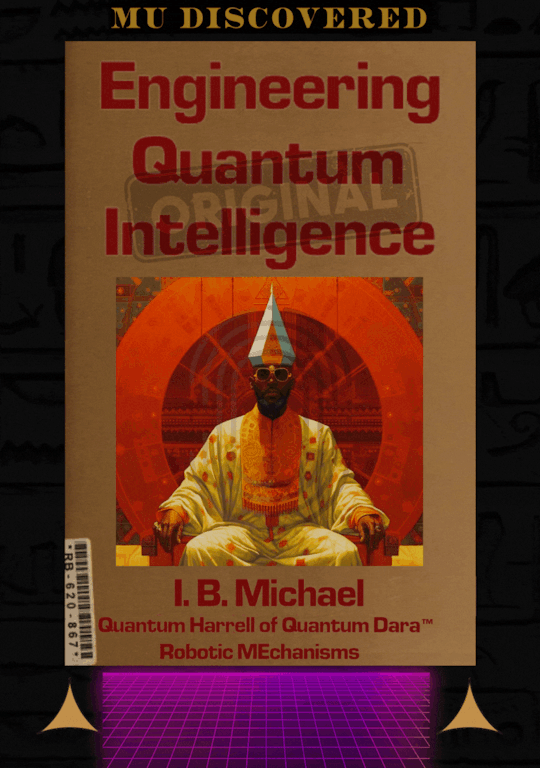
eye anu neural circuit development in X-tra dark neuromelanin.tech
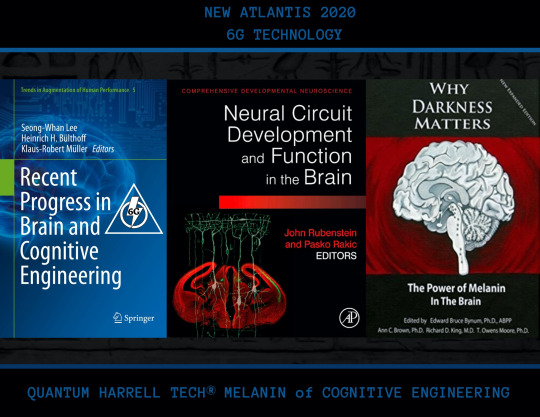
the pentagon's department of defense.gov strategy for operating in quantumharrell.tech cyberspace

CUT THOSE 6G CHECKS!!! IMMEDIATELY PAY [I/P] TO THE ORDER OF: QUANTUM HARRELL TECH LLC
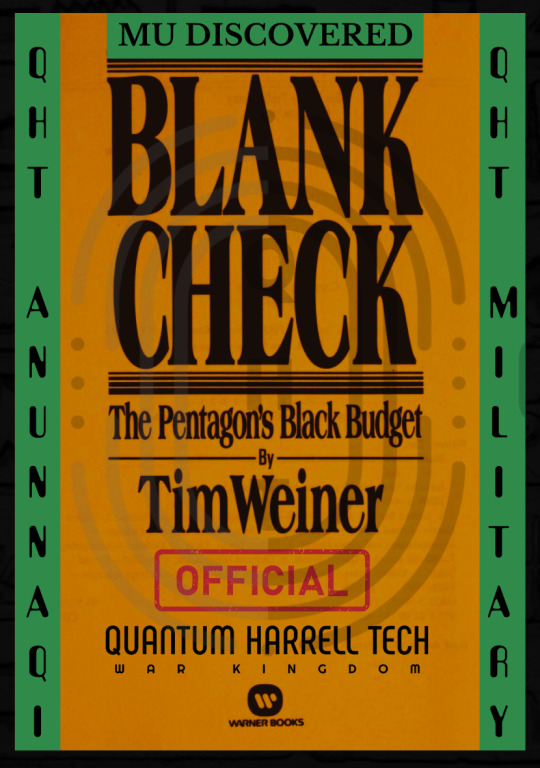
CUT THOSE 6G CHECKS!!! IMMEDIATELY PAY [I/P] TO THE ORDER OF: QUANTUM HARRELL TECH LLC

Ancient Interplanetary [A.i.] 6g-quantumharrell.tech Military Worth Trillions... Interplanetary 9 [i9] Ether quantumharrell.tech Domain Architecture Worth Quadrillions... Interplanetary 9 [i9] Ether quantumharrellufo.tech Cyberspace Engineer Worth Quintillions... since 1968-michaelharrelljr.com's Professional Research [PR] Services EXPENSIVE AF!!!
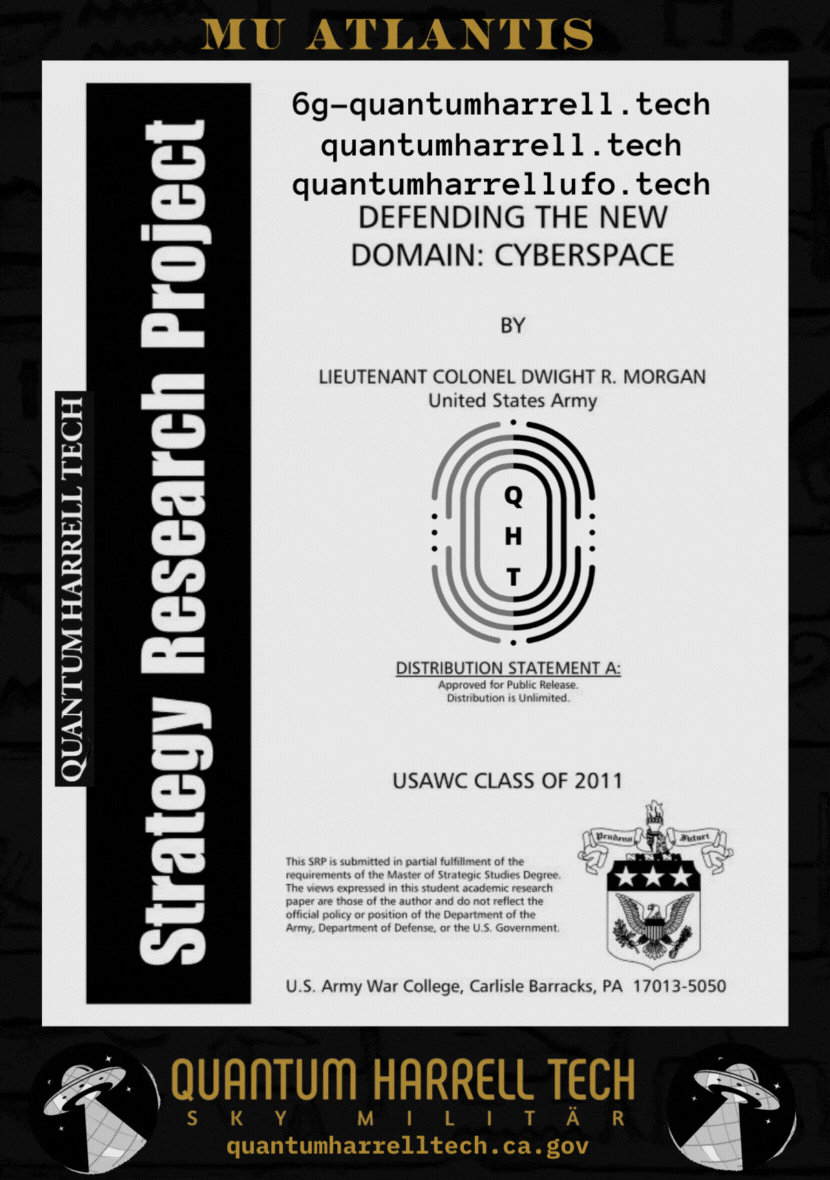
i.b.michael [ibm] 6g quantum computer programmer… mathematically & algorithmically programming [mapping] ibm.com's [mi = michael’s] quantum ibmdotcom.com networks of quantumharrelltech.com

Eye Ancient Machine [I AM] P.T.A.H. [I/P] TECH [I.T.] of IBM.com
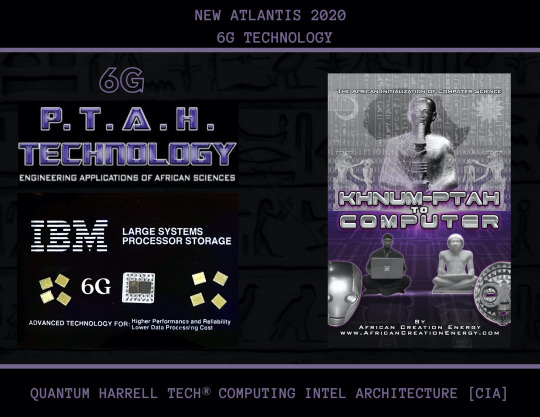
i.b. 6g hi:tekemeticompu_tah [ptah] vision for human-machine interaction

i.b. 6g hi:tekemeticompu_tah [ptah] architect [pa] 4 human-machine learning of apple.com’s [l.a.] vision pro @ quantumharrelltech.com
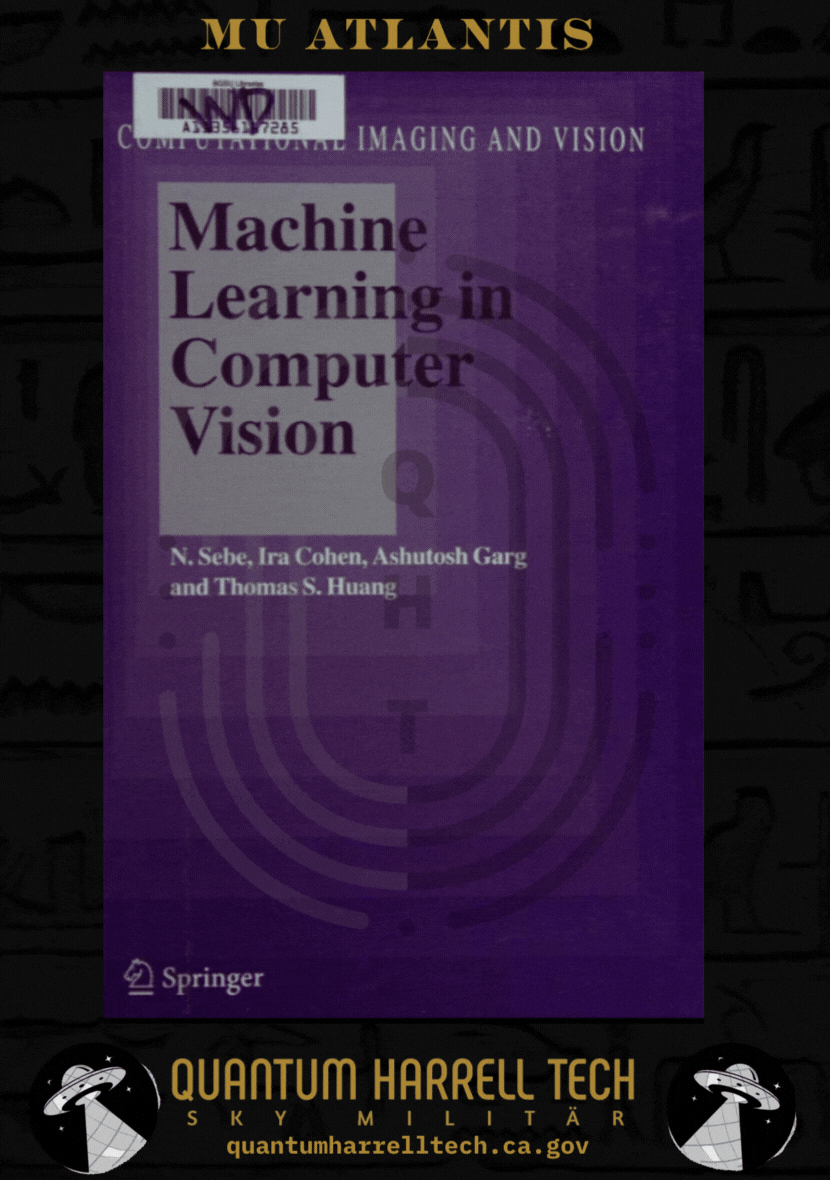
WE ALREADY ENVISIONED 2024’s 6G SKY TECH WEALTH Long B4 1698

eye vision pro of cognitive [pc] ergonomics and human computer interaction

1968-michaelharrelljr.com domain of ancient pyramid architecture [pa] 4 compu_tah [ptah] vision

eye envisioned autocad on vision pro @ quantumharrelltech.com

quantumharrelltech.com computer vision and image processing [i/p] patents @ quantumharrelltech.ca.gov

eye having 1st eye visions on quantumharrell.tech's macbook pro

eye parallel earth [qi] vision computing on earth [qi]... ya dig???

eye see u2

quantumharrelltech.com's new ministry of defense octagon complex in egypt look like a blackanunnaqi.tech base from above earth [qi]

© 1698-2223 QUANTUM HARRELL TECH LLC All LOST ANCIENT [L.A.] ATLANTEAN DNA [A.D.] DotCom [A.D.] + DotTech [A.D.] + Pre 1698quantumharrellgov.tech Domain Name Rights Reserved @ quantumharrelltech.ca.gov
#u.s. michael harrell#apple#vision pro#mu:13#kemet#The Octagon#Egypt#kingtutdna#kangsolomon.com#domain#entrepreneurship#web development#business ideas#webhosting#business growth#ibm#autodesk#autocad#cadservices#project management
3 notes
·
View notes
Text
I really missed these days. I trained under a talieson architect. Nothing but lead on vellum. Then in came Autocad. Now you have computer operators moving data around. My retirement house is being done the old way.
Urban Design Lab posted these great pics of an architect's life before CAD ...



17K notes
·
View notes
Text
Trusted PEB Structural Designer in Bhubaneswar – APS Design Infra

As Bhubaneswar rapidly grows into a commercial and industrial hub, the demand for smart, efficient, and cost-effective construction solutions has never been higher. One of the most reliable and popular choices for industrial and large-span buildings today is Pre-Engineered Buildings (PEB). If you're looking for a professional and experienced PEB structural designer in Bhubaneswar, APS Design Infra is your trusted partner for delivering durable and innovative PEB designs tailored to your needs.
What is a PEB (Pre-Engineered Building)?
A Pre-Engineered Building (PEB) is a steel structure that is fabricated and assembled in a factory and then erected at the construction site. These buildings are designed for speed, flexibility, and efficiency, making them ideal for:
Warehouses
Industrial sheds
Cold storages
Showrooms
Logistic parks
Aircraft hangars
Commercial complexes
The key advantage of PEB lies in its lightweight nature, quicker construction timeline, reduced material waste, and overall cost efficiency.
Importance of a PEB Structural Designer
Designing a PEB requires specialized knowledge of structural engineering, material strength, load distribution, and industrial standards. A qualified PEB structural designer in Bhubaneswarensures:
Optimal structural integrity and performance
Accurate load and stress calculations
Compliance with IS codes and local regulations
Safety under seismic and wind conditions
Efficient use of steel and other materials to reduce costs
At APS Design Infra, we bring a combination of innovation, experience, and attention to detail to every PEB design project we undertake.
Why Choose APS Design Infra as Your PEB Structural Designer in Bhubaneswar?
Expertise in Industrial Design
We have a dedicated team of structural engineers with years of experience in designing pre-engineered buildings for various sectors. Our solutions are engineered to be robust, cost-effective, and scalable.
Advanced Design Tools
Using leading-edge software such as STAAD.Pro, Tekla, AutoCAD, and MBS, we create accurate and optimized designs that reduce construction time and material wastage.
Custom-Tailored Designs
Every project is different. We work closely with clients to understand their operational requirements and design PEBs that are functionally efficient and structurally sound.
Code-Compliant and Safe Structures
We follow all IS and NBC codes relevant to structural steel and industrial buildings. Our designs are rigorously checked for safety under live loads, seismic forces, and wind pressures specific to Bhubaneswar’s geography.
End-to-End Support
From design consultation and engineering drawings to fabrication coordination and erection support, APS Design Infra offers a comprehensive range of services for your PEB project.
Industries We Serve:
Manufacturing and industrial units
FMCG and logistics
Retail and warehousing
Agriculture and food processing
Infrastructure and public works
Build Smart with APS Design Infra
As one of the most dependable PEB structural designer in Bhubaneswar, APS Design Infra combines strength, speed, and sustainability to deliver top-tier building solutions. Our designs ensure that your PEB stands the test of time while offering the functionality your business needs.
Get in Touch
Looking to design a Pre-Engineered Building in Bhubaneswar? Contact APS Design Infra today for expert consultation and start building with confidence and precision.
0 notes
Text
Understanding Process Engineering Design in Industrial Projects
In any industrial or manufacturing setting, efficiency, safety, and scalability are critical. This is where process engineering design comes into play. It serves as the blueprint for how raw materials and energy flow through systems to create a finished product—safely, economically, and efficiently.
Process engineering design is not just about drawing diagrams. It involves a systematic approach to designing, analyzing, and optimizing processes across chemical, petrochemical, pharmaceutical, food, and other manufacturing industries.
What is Process Engineering Design?
Process engineering design refers to the conceptualization and detailed planning of the processes involved in manufacturing. It ensures that industrial systems are designed to produce the desired product output with minimal waste, cost, and environmental impact.
This discipline combines principles of chemical engineering, mechanical engineering, thermodynamics, fluid dynamics, instrumentation, and control engineering to create safe, reliable, and effective processes.
Importance of Process Engineering Design
Maximizes Efficiency: Well-designed processes ensure minimal raw material usage, optimal energy consumption, and low production costs.
Ensures Safety and Compliance: Designs must meet industry safety codes and environmental regulations.
Enables Scalability: Good design allows systems to be expanded or modified without major overhauls.
Reduces Risk and Downtime: Anticipates operational issues before they occur through simulations and risk analysis.
Key Steps in Process Engineering Design
1. Process Definition
Understanding the product requirements, feedstock, output, and production rates.
2. Process Flow Diagram (PFD)
Creating a high-level diagram that shows major equipment and flow of materials.
3. Piping and Instrumentation Diagram (P&ID)
A detailed diagram showing pipelines, valves, instrumentation, and control systems.
4. Material and Energy Balances
Calculating inputs, outputs, heat loads, and mass flows throughout the process.
5. Equipment Sizing and Specification
Defining size, capacity, material of construction, and operational parameters of equipment like reactors, heat exchangers, and pumps.
6. Process Simulation
Using software like Aspen HYSYS, ChemCAD, or PRO/II to simulate and optimize the process.
7. Hazard and Operability Study (HAZOP)
A structured risk analysis to identify potential safety and operational hazards.
8. Design Documentation
Preparing final documentation for procurement, construction, and regulatory approval.
Industries That Rely on Process Engineering Design
Chemical and Petrochemical Plants
Oil and Gas Refineries
Water and Wastewater Treatment
Food and Beverage Manufacturing
Pharmaceutical Production
Power Generation and Energy Systems
Tools Used in Process Engineering Design
Simulation Software: Aspen Plus, HYSYS, ChemCAD
Design Tools: AutoCAD, SmartPlant, AVEVA
Analysis Software: MATLAB, COMSOL Multiphysics
Process Safety Tools: PHAST, HAZOP Manager
Conclusion
Process engineering design is the foundation of successful industrial operations. A well-designed process leads to safer, cleaner, and more profitable production lines. Whether you're building a new plant or upgrading an existing system, the importance of detailed and accurate process design cannot be overstated.
Investing in proper process engineering design is investing in the long-term success of your operations.
0 notes
Text
AutoCAD 2D & 3D Online Course – Learn Professional Drafting & Modeling Skills
Transform your design ideas into professional CAD drawings with our complete AutoCAD 2D & 3D Online Course. This course is tailored for students, engineers, architects, interior designers, and anyone seeking CAD skills. Begin your journey with an introduction to the AutoCAD interface, menus, toolbars, and navigation tools. Start with 2D drafting, learning to draw accurate floor plans, elevations, and mechanical parts. Master key tools such as line, polyline, circle, arc, offset, trim, and extend. Organize your drawings using layers, blocks, and object properties for cleaner and smarter designs. Add dimensions, text, hatches, and annotations to make your drawings informative and presentation-ready. Use templates and layout sheets to prepare your drawings for printing and sharing. Advance to 3D modeling, starting with basic shapes and evolving to detailed objects using extrude, revolve, loft, and sweep. Learn how to modify 3D objects using Boolean operations, shelling, fillets, and chamfers. Create realistic presentations with materials, lighting, and rendering tools. Understand the difference between wireframe, surface, and solid modeling in AutoCAD. Work with real-world projects like house plans, mechanical components, and furniture models. Gain efficiency with shortcut keys, command-line use, and drawing management techniques. Practice through guided exercises, downloadable DWG files, and self-paced assignments. Interactive quizzes and hands-on projects help you apply what you’ve learned. Get support from expert instructors through community discussions and Q&A sections. No prior experience is needed—just a willingness to learn and basic computer literacy. Flexible online learning allows you to access the course anytime, on any device. Receive a certificate of completion recognized by employers and academic institutions. Stay updated with lessons aligned to the latest AutoCAD software version. Perfect for both academic learning and professional development. Improve your portfolio with high-quality 2D and 3D project work. Boost your career opportunities in architecture, engineering, design, and drafting. Enroll now and build professional AutoCAD skills from the comfort of your home!

#autocad 2d & 3d course#autocad 2d and 3d online course#autocad 2d and 3d courses#auto cad 2d and 3d course#online autocad 2d & 3d course#autocad 3d and 2d
0 notes
Text
What Is BTech Mechanical Engineering Like? A Beginner’s Guide
If you're someone who enjoys figuring out how things work—how engines move cars or how machines are built—then Mechanical Engineering might just be the right path for you. But before diving into it, let’s break it down in simple terms so you know exactly what to expect from a BTech in Mechanical Engineering.
What is Mechanical Engineering All About?
Mechanical Engineering is one of the oldest and most fundamental branches of engineering. It deals with machines—how they are designed, how they operate, and how to make them more efficient. You’ll learn about everything from thermodynamics to fluid mechanics, from designing mechanical systems to working with robotics.
This course isn’t just about theory. A good Mechanical Engineering program will give you hands-on experience with machines, software tools like AutoCAD or SolidWorks, and practical lab sessions. You’ll work on real projects, build prototypes, and develop a problem-solving mindset that’s useful across industries.
What Do You Learn in Four Years?
The BTech Mechanical Engineering program usually spans over eight semesters. Here’s a basic idea of what your learning curve might look like:
Year 1: Foundation courses like Engineering Physics, Mathematics, Basics of Electrical and Mechanical systems
Year 2: More specific subjects—Engineering Mechanics, Material Science, Fluid Mechanics
Year 3: Core subjects like Machine Design, Thermal Engineering, Manufacturing Technology
Year 4: Specializations, industrial training, minor and major projects
A good curriculum balances theory with practical learning. Many of the best private engineering colleges in Odisha focus on skill-based education, encouraging students to get involved in research and industry projects right from the second year.
What About Career Opportunities?
Mechanical Engineering opens the door to a wide range of careers. You could work in manufacturing, automotive, aerospace, energy, HVAC (Heating, Ventilation, and Air Conditioning), or even mechatronics. With the rise of automation and AI, mechanical engineers today are also collaborating with software engineers in industries like robotics and smart manufacturing.
Campus placements are a big factor to consider. Look for colleges that have strong placement records in core mechanical sectors, as well as emerging fields like renewable energy. A number of colleges in Odisha have built partnerships with companies like Tata Steel, Jindal, L&T, and other engineering giants.
Choosing the Right College Matters
Not all engineering colleges offer the same quality of education or practical exposure. When it comes to Mechanical Engineering, lab infrastructure, faculty experience, and industry tie-ups make a big difference. While government colleges like NIT Rourkela are well-known, there are also a few best private engineering colleges in Odisha that stand out for their hands-on approach.
For instance, some institutions in Bhubaneswar have managed to create a balanced environment for learning and career development. One college that often comes up in discussions among students and faculty is NMIET, known for its solid mechanical engineering program, experienced faculty, and industry-focused labs. Though it’s a private college, the practical focus and exposure it offers help students build real-world skills.
Is Mechanical Engineering Hard?
Mechanical Engineering isn’t hard if you’re genuinely interested in how machines and systems work. Yes, you’ll study technical subjects and spend time on lab work, but if you like solving problems and working with your hands, it can be extremely rewarding. What helps the most is being in a college that supports your learning journey with good mentors and resources.
Final Thoughts
Mechanical Engineering is a strong and versatile field, especially for students who like building, designing, and fixing things. If you’re willing to put in the work, the opportunities are plenty—whether in traditional industries or new-age technologies.
Take the time to research, visit campuses, and speak to current students if possible. The right environment can make your learning experience more enjoyable and impactful. And with Odisha becoming a hub for quality technical education, you’ll find a range of institutions that can help you grow, learn, and build a solid future.
#bhubaneswar b tech colleges#college of engineering bhubaneswar#best engineering colleges in orissa#best engineering colleges in bhubaneswar#best private engineering colleges in odisha#best engineering colleges in odisha
0 notes